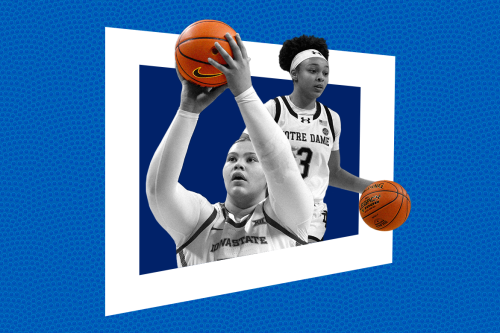I’m currently training for two back-to-back, incredibly challenging marathons in Boston and New York City—which, aside from a lot of early morning runs and solid hydration practices, requires a significant belief in myself. And long ago, I realized that comparing my progress to others’ by sharing my pace on social media was messing with my running confidence. So I decided to stop doing it altogether.
Experts in This Article
New York City-based Nike running coach
Thanks to an influx of wearables that make it easy to track running data (looking at you, Apple Watch and FitBit), community run sharing has exploded in recent years. Apps like Strava and Map My Run, along with social media platforms like Instagram and Facebook, allow runners to track and share their times, splits, and progress. On one hand, these are incredible tools for building a community, but on the other, they have the potential to negatively impact people’s mental health.
“I think platforms like [these] are both the best and the worst things that have happened to the running community,” says Nike Run coach Jes Woods. “Sharing your runs on social media or a running platform is great for camaraderie and virtual community building, but it can also become a source of negative anxiety.”
This was certainly the case for me. Sharing my stats on Instagram made me think that I wasn’t “good enough” to call myself a runner because I wasn’t as fast as my peers—which according to Woods, is a problem that many runners face. Though it might be tempting to see how your pace stacks up to others’ on social media, “comparing yourself to your competitors or teammates or online running buddies leads to questioning your fitness and training, which can be a downward spiral,” she says. Her advice? Curate your feed (meaning mute or unfollow anyone whose run-related posts stress you out), and share your runs and paces only if it brings you joy.
It’s worth noting that it isn’t just social media that can lead to this sort of comparison-related anxiety: Trackers have the potential to create a level of internal pressure, too. At one point in my training, I was compulsively checking the trackers both on my watch and phone (because I had to run two at once, right?!). Looking down at my wrist every 30 seconds while I ran was distracting and anxiety-inducing, and it became detrimental when I started to beat myself up over the numbers I was seeing.
“Sometimes we’re so fixated on our tracker that we forget to listen to our body, which is our most important advice-giver,” Hillary Cauthen, PsyD, CMPC, certified mental performance consultant with the Association of Applied Sport Psychology, previously told Well+Good. Comparing my stats to those of past runs created negative conversations in my head, so I decided to stop living by the numbers and simply let my body do its thing, instead.
Of course, training for a marathon requires at least some attention to your pace—but there’s no need to make it the primary focus every time you lace up to log some miles. “There’s a time and place for focusing on pace, like speed workouts or prescribed long run workouts,” says Woods. “But a lot of times, I want to throw my runners’ watches into the Hudson River.”
Moving away from militantly tracking my pace (and, in effect, sharing it with my followers) has taught me to run from the heart, and made me realize that I am who I am, I run what I run, and I don’t want to change that. My motto these days? “No Pace, No Problem.”
Oh hi! You look like someone who loves free workouts, discounts for cult-fave wellness brands, and exclusive Well+Good content. Sign up for Well+, our online community of wellness insiders, and unlock your rewards instantly.
Sign Up for Our Daily Newsletter
Get all the latest in wellness, trends, food, fitness, beauty, and more delivered right to your inbox.
Got it, you've been added to our email list.











